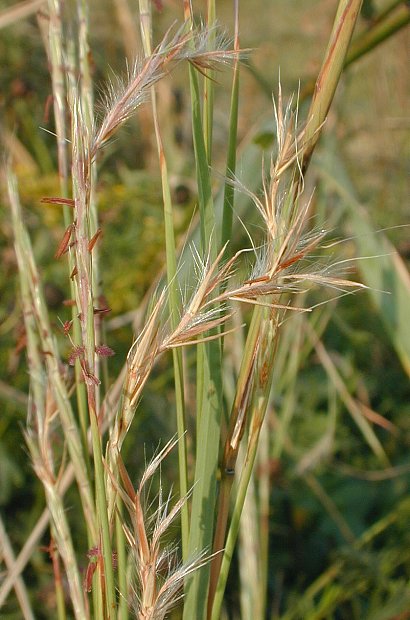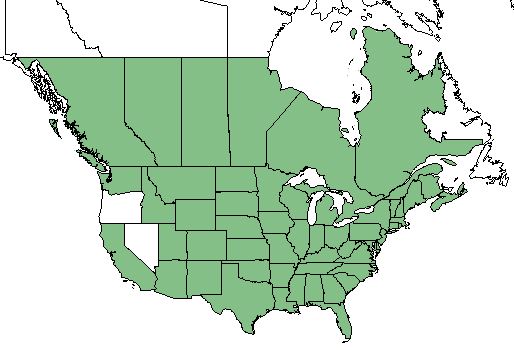Difference between revisions of "Schizachyrium scoparium"
Krobertson (talk | contribs) |
|||
| Line 35: | Line 35: | ||
===Phenology=== <!--Timing off flowering, fruiting, seed dispersal, and environmental triggers. Cite PanFlora website if appropriate: http://www.gilnelson.com/PanFlora/ --> | ===Phenology=== <!--Timing off flowering, fruiting, seed dispersal, and environmental triggers. Cite PanFlora website if appropriate: http://www.gilnelson.com/PanFlora/ --> | ||
| − | ''S. scoparium'' | + | ''S. scoparium'' has been observed to flower in November. <ref name= "PanFlora"> Nelson, G. PanFlora: Plant data for the eastern United States with emphasis on the Southeastern Coastal Plains, Florida, and the Florida Panhandle. www.gilnelson.com/PanFlora/ Accessed: 29 MAY 2018 </ref> |
<!--===Seed dispersal===--> | <!--===Seed dispersal===--> | ||
<!--===Seed bank and germination===--> | <!--===Seed bank and germination===--> | ||
| + | |||
===Fire ecology=== <!--Fire tolerance, fire dependence, adaptive fire responses--> | ===Fire ecology=== <!--Fire tolerance, fire dependence, adaptive fire responses--> | ||
''S. scoparium'' is highly fire tolerant, resprouting quickly following fire, and is the dominant grass species in some fire-dependent communities (e.g., western upland longleaf pine forest).<ref>Smith, L. 2009. The natural communities of Louisiana. Louisiana Natural Heritage Program, Louisiana Department of Wildlife and Fisheries, 46 pp.</ref> | ''S. scoparium'' is highly fire tolerant, resprouting quickly following fire, and is the dominant grass species in some fire-dependent communities (e.g., western upland longleaf pine forest).<ref>Smith, L. 2009. The natural communities of Louisiana. Louisiana Natural Heritage Program, Louisiana Department of Wildlife and Fisheries, 46 pp.</ref> | ||
Revision as of 18:24, 6 November 2018
Common name: pinehill bluestem [1], common little bluestem [1], creeping little bluestem [1], little bluestem [2]
| Schizachyrium scoparium | |
|---|---|

| |
| Photo by John Hilty hosted at IllinoisWildflowers.info | |
| Scientific classification | |
| Kingdom: | Plantae |
| Division: | Magnoliophyta - Flowering plants |
| Class: | Liliopsida - Moncots |
| Order: | Poales |
| Family: | Poaceae |
| Genus: | Schizachyrium |
| Species: | S. scoparium |
| Binomial name | |
| Schizachyrium scoparium (Michx.) Nash | |

| |
| Natural range of Schizachyrium scoparium from USDA NRCS Plants Database. | |
Contents
Taxonomic Notes
Synonyms: (for var. divergens) Andropogon scoparius Michaux var. divergens Hackel; Andropogon divergens; (for var. scoparium) S. scoparium; S. scoparium ssp. scoparium; (for var. stoloniferum) S. stoloniferum Nash; Andropogon stolonifer (Nash) A.S. Hitchcock
Varieties: Schizachyrium scoparium (Michaux) Nash var. divergens (Hackel) Gould; Schizachyrium scoparium (Michaux) Nash var. scoparium; Schizachyrium scoparium (Michaux) Nash var. stoloniferum (Nash) J. Wipff
Description
S. scoparium is a perennial graminoid of the Poaceae family native to North America and Canada and introduced to Hawaii. [2]
Distribution
S. scoparium is found: everywhere in the United States excluding Oregon and Nevada; every region in Canada; every island in Hawaii. [2]
Ecology
Habitat
S. scoparium proliferates in various open habitats, in a wide range of moist to dry habitats, fall-line sandhills in the inner Coastal Plain, perhaps in other dry habitats. [1] It also occurs often in relic P. palustris/wiregrass communities. [3] Specimens have been collected from wet pine flatwoods, palmetto slash pine woodland, oak-palmetto woodland, blaffs along river, treeless chalk glade, wet road ditch, cypress swamp, dry glade, palm hammock, sand-pine oak woodland, slashpine savanna, longleaf pine sand ridge, pine flatwoods, longleaf pine wiregrass savanna, upland old field, pond pine flatwoods, and open river banks.[4]
Phenology
S. scoparium has been observed to flower in November. [5]
Fire ecology
S. scoparium is highly fire tolerant, resprouting quickly following fire, and is the dominant grass species in some fire-dependent communities (e.g., western upland longleaf pine forest).[6]
Use by animals
S. scoparium has medium palatability for browsing animals and high palatability for grazing animals. [2]
Conservation and Management
Cultivation and restoration
Photo Gallery
References and notes
- ↑ 1.0 1.1 1.2 1.3 Weakley, A. S. (2015). Flora of the Southern and Mid-Atlantic States. Chapel Hill, NC, University of North Carolina Herbarium.
- ↑ 2.0 2.1 2.2 2.3 USDA Plant Database https://plants.usda.gov/core/profile?symbol=SCSC
- ↑ Andreu, M. G., et al. (2009). "Can managers bank on seed banks when restoring Pinus taeda L. plantations in Southwest Georgia?" Restoration Ecology 17: 586-596.
- ↑ URL: http://herbarium.bio.fsu.edu. Last accessed: June 2018. Collectors: R.K. Godfrey, Angus Gholson, Cecil Slaughter, Loran C. Anderson, Mark A> Garland, Marc Minno, Wilson Baker, Ann F. Johnson, R. Komarek, R. Kral, Richard S. Mitchell, R. E. Perdue, A.F. Clewell, Robert Blaisdell, Robert Lazor, Ginny Vail, Sidney McDaniel. States and counties: Georgia (Grady, Thomas, Baker) Alabama (Crenshaw) Louisiana (Winn) Florida (Grady, Okaloosa, Indian River, Franklin, Gadsden, Clay, Wakulla, Jackson, Volusia, Flagler, Leon, Walton, Bay, Escambia, Liberty, Columbia, Osceola, Marion, Taylor, Madison, Levy, Dixie, Baker, Calhoun, Okaloosa, Santa Rosa, Nassau)
- ↑ Nelson, G. PanFlora: Plant data for the eastern United States with emphasis on the Southeastern Coastal Plains, Florida, and the Florida Panhandle. www.gilnelson.com/PanFlora/ Accessed: 29 MAY 2018
- ↑ Smith, L. 2009. The natural communities of Louisiana. Louisiana Natural Heritage Program, Louisiana Department of Wildlife and Fisheries, 46 pp.